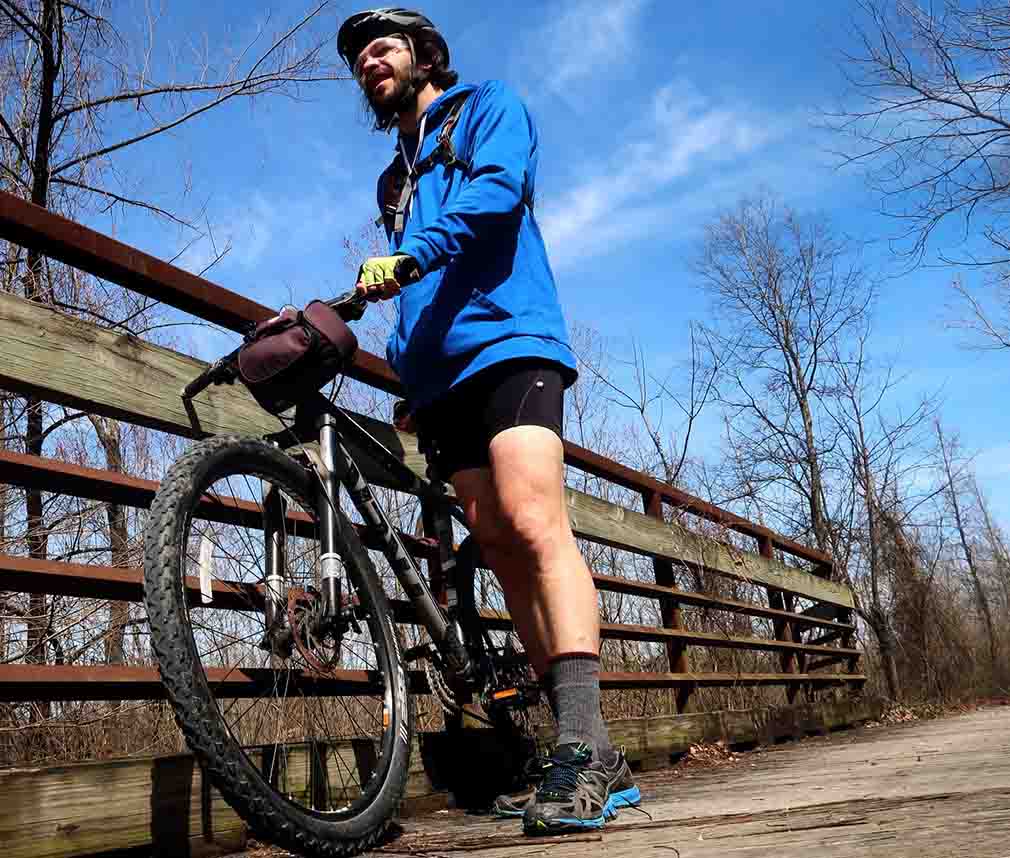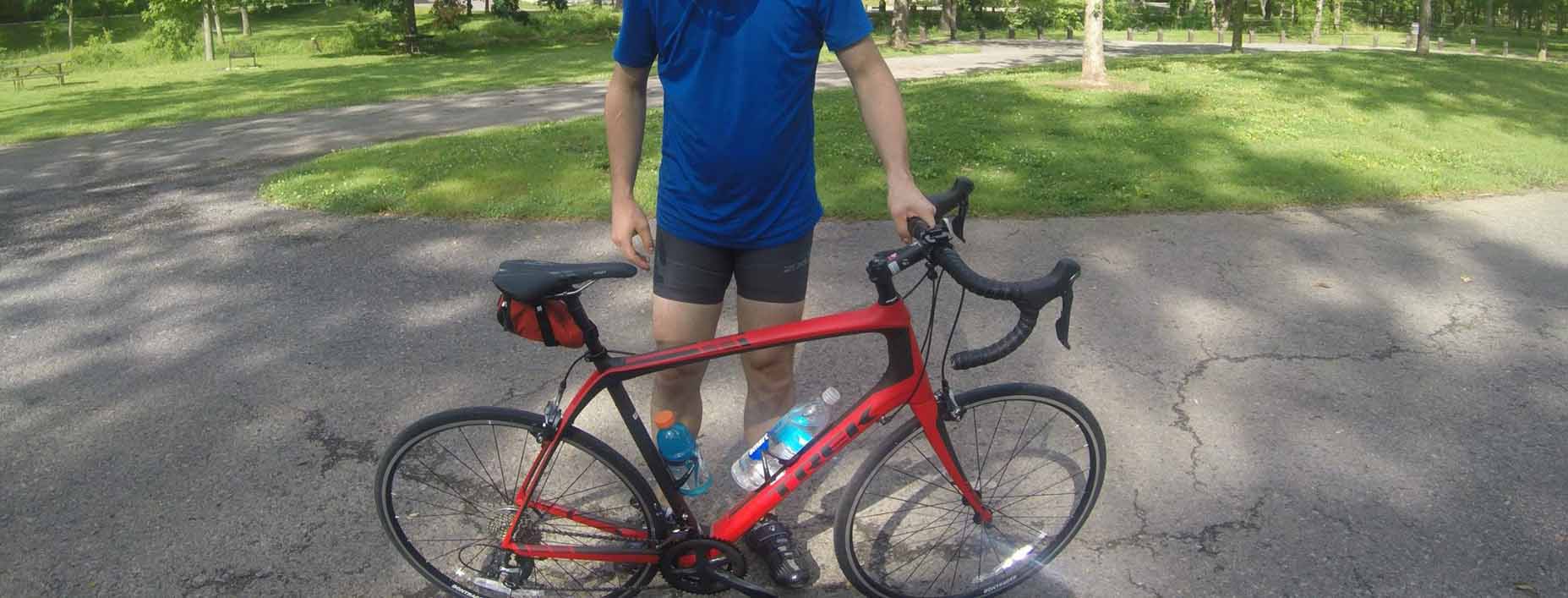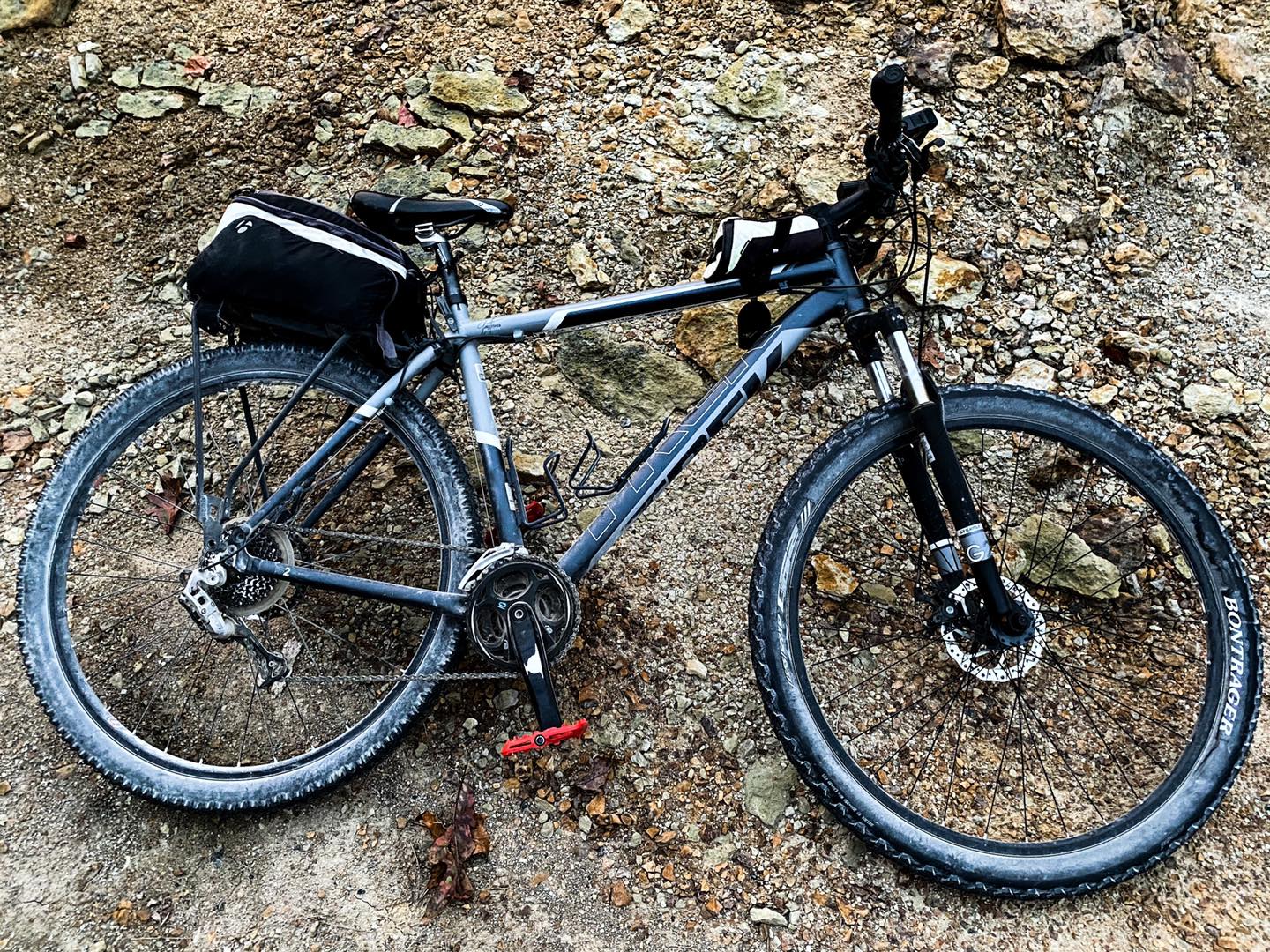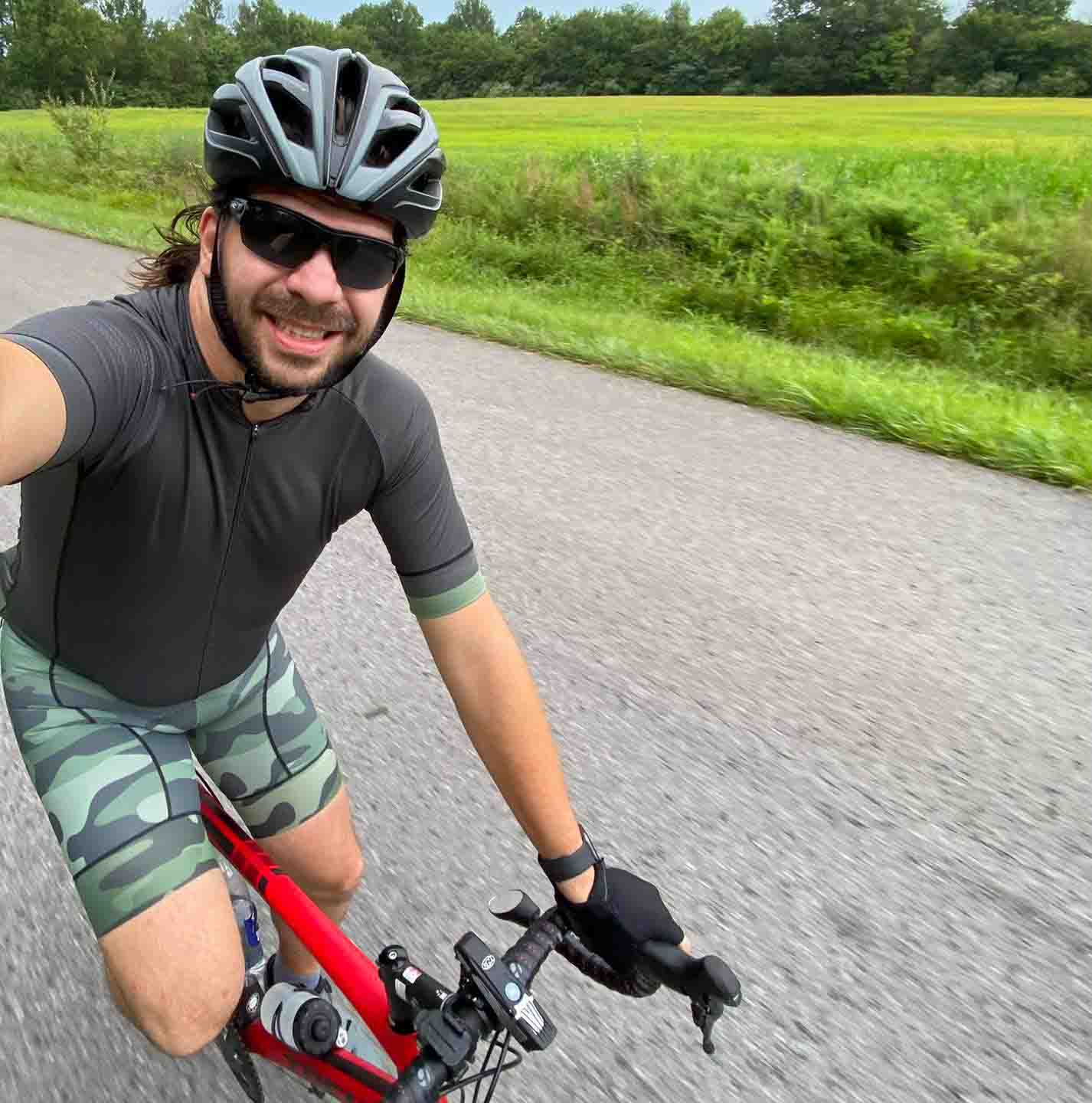23 Tips for Beginner Cyclists to Help Make Cycling Better
We were all beginner cyclists at one time.
I’ve been cycling long enough to not really call myself a beginner anymore. But I’m definitely still learning because that really never stops.
One of the best pieces of advice I can give you is to take a look at all the tips out there available for you to consume and use to make your cycling journey better.
To help you out, I’ve compiled some of the best tips for beginner cyclists in this article. I hope you enjoy it.
Training Tips for Beginner Cyclists
The following tips are aimed at training and general techniques for beginner cyclists.
1 – Stay Consistent
The one thing all beginner cyclists should learn how to do is to stay consistent.
Stay consistent with your training. Stay consistent about riding frequently. Stay consistent with your cycling techniques. Just be consistent about things, and you’ll see great improvements.
But consistency isn’t just sticking to one pace or one thing forever.
You’ll want to gradually increase your training and technique, and that’s a good thing. But just try to keep consistency as you increase it to better your abilities.
2 – Do Strength Training
Beginner cyclists need to train further to better themselves on the bike.
You should consistently do strength training along with cycling. The stronger you are, the better your cycling will be.
Strength training isn’t just for your legs, either. You need to work out your core and your upper body because they all work together when you’re on the bike.
Losing a few extra pounds may be the one thing that makes you a better rider all the way around. The bike isn’t the only way to do it. Cardio fitness and weight training are also two good avenues.
3 – Do Flexibility Training
The more flexible you are, the easier it will be to ride your bike.
Consider doing flexibility training frequently. This will help you have better posture on your bike and prevent injuries.
There are many ways to do flexibility training, too.
You can simply work on stretching. Stretch in the morning when you wake up, after a few miles of riding, and then before you go to bed. You can also accomplish more flexibility by doing Yoga on a routine basis.
4 – Make Sure Your Bend Your Elbows
A lot of beginner cyclists make the dire mistake of not bending their elbows on a ride.
Try to bend your elbows slightly as you ride. This helps relieve pressure on your arms and elbows and prevent pain.
By keeping your elbows straight, you apply a lot of pressure to them. This can cause them to stiffen up and take the harder blunt force of movements made while you’re biking. It can even result in pain and injury.
It’s important to loosen yourself up as you bike.
5 – Don’t Death Grip Your Handlebars
Try not to death grip your handlebars.
This means squeezing really tight to hang on to them. You definitely want to have some grip on them so you don’t have an accident, but that doesn’t mean you need to squeeze down so far.
By squeezing down hard on your handlebars, your hands and wrists are absorbing a lot of shock and friction from the ride. It can prolong pain and even cause injury.
As I stated before, try to ride in a way that allows you to loosen up your body, grip, and shoulders and work on becoming more flexible.
6 – Measure the Time of Rides, Not Your Distance
Distance isn’t what makes you better at cycling. Time is what you want to focus on.
Beginner cyclists are slow at first and can’t ride very long rides. It’s important to work your way up to becoming faster and riding longer.
You can ride longer by getting faster at riding.
At first, try to ride 20 miles in x amount of time. Then try to ride the same 20 miles in less time. If you can cut it in half, then you could do 40 miles in the original amount of time. That’s what you want to measure rather than how far you can ride.
7 – Learn How to Draft
One of the key fundamental skills beginner cyclists should learn is drafting in a group.
Unless you plan to never ride with a group, you need to learn how to draft. And you should also ride with a group when you can. It’s rewarding, and you can learn a lot of new things and make a lot of new cycling buddies.
Drafting is when you ride closely behind another rider to save energy by reducing wind resistance. Most group ride events rely on each rider taking turns leading a group so everyone can draft on one another.
Drafting might seem scary at first because you’re so close to one another, but as you learn each other’s riding habits and get to know each other better, it becomes a lot easier and less scary.
8 – Be Sure to Stay Hydrated
Beginner cyclists make this mistake more than anyone else.
They forget to hydrate often. Big mistake.
You should drink water or a drink with electrolytes mixed into it for at least 30 minutes every hour you ride your bike. Staying hydrated is critical to preventing cramps, dehydration, and other emergency situations.
Drink to quench your thirst, even when you’re not thirsty. Drink all your water for the ride, and come back home with empty bottles.
9 – Try to Stay Fueled
It’s just as important to stay fueled as it is to stay hydrated while cycling.
As you fuel yourself, you’ll get back energy and the ability to keep pedaling, climbing, and riding faster.
You should eat healthier snacks, energy bars, gels, chews, and gummies that are loaded with calories, sodium, and carbs in a healthier configuration to help replenish what you lose while riding.
Every half hour to an hour, take a bite of your fuel and wash it down with a few big swigs of your hydration. This will keep you hydrated and fueled for your entire ride.
10 – Don’t Brake Too Hard
If you brake too hard, you’ll face more problems than you will be able to stop quickly.
The only time you should brake really hard is in the event of a critical situation that calls for it. In that case, you might wreck in the process, depending on what you’re riding on.
Braking too hard on gravel or dirt will likely cause your tires to slide and your car to spin sideways. If you’re not prepared for that, you could wreck.
It’s better to ease on the brakes and slow down long before you need to come to an immediate stop. Try to use both front and rear brakes together without squeezing them too hard.
11 – Master Your Turning Technique
Beginner cyclists should focus on their turning technique.
At first, you’ll want to brake before or even during your turn. Turning might even give you some anxiety, especially for tighter turns.
But you need to work on your turning technique to make your turn efficient.
Slow down before you get to the turn if you don’t want to take it too fast. Don’t brake during the turn. Before you straighten back up, you should be pedaling to accelerate to a higher speed. Practice makes perfect for getting better at turns.
12 – Sit in Your Saddle Properly
First, you want to make sure your saddle height is correct. Too low or too high will cause pain. You want to be somewhere in between, where you don’t hurt but can still put power into pedaling.
A local bike shop can get you a bit fit and make everything great. You might have to try a few different shops until you get it right, but chances are, they’ll do better than your guesswork.
Make sure that you sit fully on the saddle when you ride. You shouldn’t be sitting on your side too much, too far to the front, or too far to the back unless you’re riding over technical terrain or getting aerodynamic.
Use padded cycling shorts or bibs to help relieve pressure and pain on your sit bones. Try to stay in the saddle as much as possible.
13 – Just Spin
Spinning is when you are constantly pedaling in a gear that makes the pedaling a little easier.
This is a great way to lose weight and become skinny. If you pedal in a harder gear, that’s when you build bigger leg muscles. It’s up to you gear-wise based on your needs and wants.
Spin while you ride up a hill. Spin while you ride down a hill. Spin while you ride the flats. Try to keep your cadence going at a consistent spin.
You don’t want to stop pedaling for too long, even when going downhill. It’s important to keep spinning to improve your cycling technique.
14 – Get a Proper Bike Fit
This is one of the biggest mistakes made by beginner cyclists – not getting a good bike fit.
Not all bicycles are alike. Different frames, wheels, and component sizes cater to different types of people based on height, weight, and needs.
If you get just any bike and it doesn’t fit you properly, it’ll likely cause you more pain and problems than you want to experience. You really can’t make a bad-fitting bike fit you better, either.
Your best option is to go to a local bike shop and get a proper fit. It helps if you wear cycling shorts, too. They can give you a better fit when you’re dressed for cycling.
15 – Cadence is Really Important
Cadence can be simply defined as the speed at which you turn your pedals.
Cadence is measured by revolutions per minute (RPM), which is a full turn of your pedal, resulting in one revolution.
Generally, the best cadence to be at is around the 80 to 90 RPM area. It’s okay if you’re more in the 70s. Professional cyclists might have a cadence average of 100 to 110 RPM.
The more you consistently pedal and learn how to use your gear, the better you can improve your cadence with simple practice.
16 – Start Slow and Increase Gradually
Don’t try to be a professional cyclist from the get-go.
It’s important to start slow and basics. As you ride more and more, you can increase your speed and mileage.
You have to give yourself time to be able to develop your cycling technique.
Remember, getting great at cycling doesn’t happen overnight.
17 – Get Out of Your Comfort Zone
Don’t stick to one thing and one thing only.
In order for beginner cyclists to improve, they have to be willing to step out of their comfort zones.
Mix things up.
Choose a different route. Attack steeper hills. Go faster and farther. Ride a 100 miles in one day. Gear up for winter cycling and ride all year long. Leave your comfort zone and improve your cycling technique.
18 – Don’t Ride Hard Early in a Climb
The best way to destroy yourself on a climb is to go too fast up a hill.
When you get to a hill on your bike, slow down and try to keep spinning up it. Get into a lower gear and just slowly make your way up, especially for the bigger, steeper hills.
If you pedal too hard, try to go too fast, and wear yourself out, you’ll probably bonk out pretty quickly after that hill. If you bonk out, that’s usually the end of your ride.
If you take the hill slowly and focus on getting it done efficiently, you’ll be able to keep cycling and attack even more hills during your ride.
19 – Master Your Bike Gears
All beginner cyclists need to master the gears on their bikes.
Once you understand how every gear works and what combination is best for utilizing your gear, cycling gets a whole lot easier.
High gears are best for riding on the flats and going downhill. Low gears are best for going uphill. Different gear configurations will help your overall riding in general.
The best way to get good at your gears is to practice, practice, and practice some more.
20 – Try Not to Avoid Hills
Don’t avoid hills – instead, attack them as much as possible.
By attack, I mean ride them when you can. Seek them out and ride up and down them.
Hills will make you a better cyclist. They get easier to climb the more you climb them and develop your climbing skills. They’ll turn you into a powerful cyclist.
Start with smaller hills and work your way up to the larger and steeper ones.
21 – Be Active on Strava
Strava is where the cycling community is at.
You can use the free version, but if you can afford it, go premium. You get access to many great metrics to help you monitor your performance. It’s basically a social network for athletes.
Strava can be integrated into just about any bike computer or measuring device, too.
You can find all your friends and fellow cyclists hanging out on Strava.
22 – Listen to Your Body
I can give beginner cyclists tips all day long, but your body is where it matters the most.
If you are in pain, take the steps necessary to mitigate the pain. If you’re wearing yourself out, take a break from riding. Don’t overdo it. Listen to your body.
Be sure to check with your local physician if you have any problems that could be caused by cycling.
This information is for educational purposes only. This is not meant to be health advice.
23 – Adjust to Prevent Pain
If you’re in pain on your bike and it’s not general pain from a long, hard ride, then you need to make changes.
If your back or knees hurt, you need to adjust the height of your seat. If your foot hurts, you may need to adjust your cleats.
If your hands hurt, maybe you need better gloves, or you need to loosen your grip on the handlebars. If your arms and elbows hurt, try slightly bending your elbows on your next ride. If your butt hurts, start wearing a pair of padded Lycra bike shorts.
Make changes that will make you hurt less so you can focus on enjoying your bike ride.
Final Thoughts About Beginner Cyclists
That concludes my tips for beginner cyclists. These tips are definitely not the only ones to follow. I’ll be posting more tips in the next few articles.
If you enjoyed reading this post, please share it. If you liked this post enough to want to support my efforts, you could also give me a one-time donation.
Subscribe to my free newsletter for upcoming weekly cycling tips and resources sent right to your inbox.
About Shawn Gossman
Shawn Gossman is the author of this post and founder of the Beginner Cycling Tips Blog.
Shawn has been an avid cyclist for around 12 years. He road, gravel, mountain, and trail bikes. He likes adventuring more than racing.





Trackbacks/Pingbacks